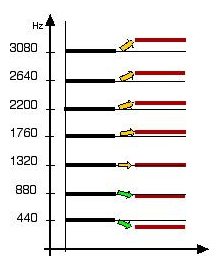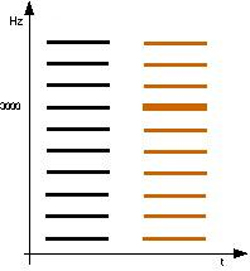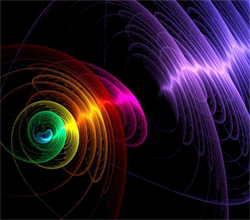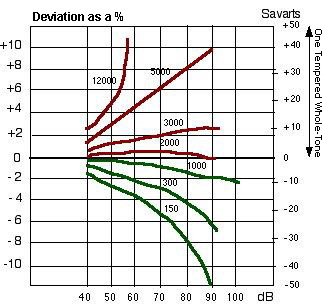
Part 1 of this article provided a “physical” definition for timbre, stressing its “plural” aspect and discussing the elements which make it up and define it.
Above all, there was discussion of the infinite number of possible combinations between these spectral components.
We’re going to further this analysis here by focusing on how different types of parameters—such as intensity, duration, and space—influence our perception of timbre.
In fact, these variables are not isolated from each other; by changing one, we effect another either in a real, tangible way (which means that it can be physically measured) or subjectively (perceived by our ears and our brains).
Perceiving timbre as a whole is the result of our brains assimilating and evaluating all psycho-acoustic parameters.
The Stevens Effect
This experience concerns simple sounds (sine waves). On a given and constant frequency, for example 5000 Hz, intensity will be increased by about 40 to 90 dB. The listener honestly thinks that the sound has become higher, about 40 savarts, which means around a whole step (a “tempered” whole-step equals 50 savarts). This is due to a virtual frequency variation, which only effects the human ear.
For frequencies below 1000 Hz, it’s the opposite. You’d have the impression that the sound gets lower when it’s intensity increases (Figure 1). This is called the Stevens Effect.
Consequences Of The Stevens Effect
A real change in the intensity of the spectrum’s components creates a subjective variation in timbre (tone).
In the case of a complex signal—in other words, the majority of sounds that surround us—when there’s a progressive variation in the intensity of a sound, each component will undergo its own Stevens Effect. You can see how our ears erroneously perceive the components of a sound when there’s a trumpet crescendo, for example.

Can we still speak about harmonic spectrums if certain frequencies make us believe that they are higher or lower than they really are? For our ears, there’s in fact a sensation of a real timbral change when intensity increases (Figure 2).
It can therefore be deduced that all complex signals subject to a variation in intensity will be perceived as having had it’s timbre altered.
The Role Of Formants
In Part I, we saw that a formant is a frequency of the spectrum which is particularly strong in terms of energy. Some wind instrument players and classical singers use this fact to gain power (or at least to give you that impression) without really producing more energy. Trying to do so would be really difficult on their lungs.
How does this illusion work? Well, it’s a little bit like the trick-question about which is heavier; a ton of feathers or a ton of lead? The instrumentalist works on his sound (timbre) to give the impression that they’re increasing intensity (Figure 3).

Thanks to his/her technique, he/she will change the energy in the sound’s spectrum, concentrating it more specifically around 3000 Hz, where our ears are more sensitive and react to the most weak intensities. The sound is perceived as being stronger by the listener, while on a console, we’ll just see a small change on the VU meter.
Real Modification Of Timbre & The Sensation Of Frequency Variation
When one part of the spectrum is filtered, which can happen on stage because of an obstacle, you can a get the unpleasant impression that the musician is out of tune: a little sharp or a little flat. This phenomenon is due to the absorption of a frequency band of the spectrum by the obstacle. This “hole” in the timbre can be enough to make us believe that the frequency has changed.
This effect is noticed in the case of separated sounds, which is the case of music in general. It will be more flagrant if the spectrum of the instrument isn’t very, or not at all, harmonic; for example, bell sounds or a xylophone.
This phenomenon doesn’t happen when there’s a continuous harmonic sound. Our memories remember the spaces between the harmonics and the in-tune aspect is kept. Only changes in timbre, due to filtering, will be perceived.





















